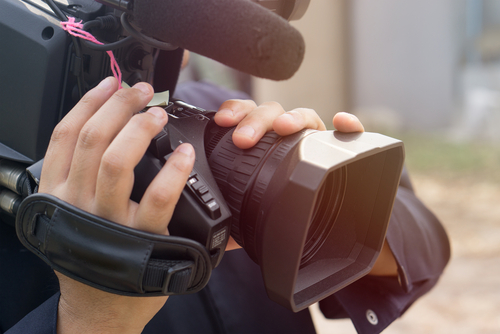Legal Videography: Changing the Way Proof is Captured and Offered
Legal Videography: Changing the Way Proof is Captured and Offered
Blog Article
Looking Into the Systems of Lawful Videography: Introduction Its Operation in Safeguarding Authentic Aesthetic Testament for Judicial Process
In the world of judicial procedures, the duty of legal videography stands as a keystone in protecting and offering visual proof. As technology proceeds to advance, the devices behind legal videography have come to be progressively detailed, providing an important layer of credibility to testimonies recorded on video clip.
Historical Advancement of Lawful Videography
Taking a look at the historic progression of legal videography discloses a significant change in the recording and discussion of visual evidence within the legal landscape. In the past, lawful process heavily depended on written photos and records to record occasions and offer evidence. With the advent of video clip modern technology, the legal sector experienced a standard change in how visual statement was recorded and offered.
The development of legal videography can be mapped back to the late 20th century when innovations in video recording equipment made it more obtainable for usage in courts. This technical development not only enhanced the precision and reliability of aesthetic proof but likewise reinvented the way instances existed to discretionary (Legal Videography). Attorneys started to identify the persuasive power of video recordings in sharing feelings, nuances, and non-verbal cues that written photographs or records alone can not catch properly

Technology Innovations in Video Clip Documents
What crucial technological developments have transformed video documents in the legal area? The legal area has seen substantial advancements in video clip documentation modern technology that have actually boosted the authenticity and dependability of visual evidence in judicial process.
Additionally, improvements in video security and watermarking innovations have reinforced the protection and tamper-proof nature of video proof, securing it against unapproved changes or tampering. Moreover, the arrival of cloud storage space remedies and remote gain access to capacities has streamlined the storage space, access, and sharing of video evidence, helping with smooth partnership among attorneys and ensuring efficient accessibility to essential aesthetic testaments when needed. These technical improvements in video clip documents have actually definitely changed the lawful area, enhancing the accuracy, reputation, and admissibility of aesthetic evidence in judicial procedures.
Duty of Lawful Videographers in Court Settings
The evolution of video clip paperwork technology in the lawful field has actually demanded a vital duty for legal videographers in court room settings, making certain the honesty and dependability of aesthetic testimonies provided throughout judicial proceedings. Lawful videographers play a fundamental function in capturing and maintaining exact visual proof that can be essential in lawsuit. Their duty includes setting up equipment, tape-recording procedures, and generating high-grade videos that properly reflect the events in the court room.
In addition, lawful videographers typically work carefully with legal teams to ensure that the video clip proof aligns with the case's needs and can be properly offered in court to support the legal disagreements being made. On the whole, the role of legal videographers in court settings is important in maintaining the principles of justice and guaranteeing the openness of legal procedures. Legal Videography.

Ensuring Admissibility and Integrity of Video Proof
To keep the trustworthiness of aesthetic evidence presented in lawful proceedings, making sure the admissibility and honesty of video proof is an important responsibility for legal videographers. Admissibility refers to the acceptance of evidence by the court, and for video evidence to be permissible, it must satisfy particular standards. Legal videographers find play an important duty in making certain that the videos they capture follow the rules of evidence, such as relevance, dependability, and authenticity.
Stability of video clip evidence includes preserving the originality and accuracy of the video footage from the moment it is tape-recorded until it is presented in court. This includes securely saving the video clip data, documenting the chain of wardship, and preventing any kind of meddling or changes. Legal videographers should stick to strict methods to assure the stability of the video evidence and prevent any kind of obstacles to its credibility.
Future Trends in Legal Videography
Given the increasing dependence on modern technology in lawful procedures, lawful videographers are positioned to accept innovative advancements forming the future of visual testimony capture and discussion. One of the prominent fads coming up is the assimilation of virtual fact (VR) and enhanced fact (AR) innovations into lawful videography. These innovations have the possible to reinvent how aesthetic evidence exists in courts, allowing courts and juries to submerse themselves in the scene of the criminal offense or incident.
Moreover, the use of man-made intelligence (AI) formulas for video clip analysis is anticipated to improve the procedure of evaluating and assessing large quantities of video clip footage. AI can help in recognizing essential minutes, anomalies, and patterns within video clips, boosting the effectiveness of lawful investigations.

Conclusion
In verdict, legal videography has actually played a vital role in supplying authentic visual proof for judicial proceedings. With technological improvements and the know-how of legal videographers, the integrity and admissibility of video clip evidence are made certain in courtroom setups. As legal videography continues to advance, it will be vital to support criteria that maintain the accuracy and integrity of visual testimony for the future Get More Information of lawful process.
Analyzing the historic development of legal videography reveals a considerable transformation in the capturing and presentation of aesthetic proof within the legal landscape.The evolution of video paperwork modern technology in the legal field has actually demanded an essential function for lawful videographers in court room setups, ensuring the stability and dependability of aesthetic testaments offered throughout judicial proceedings. Additionally, legal videographers typically function carefully with lawful groups to make certain that the video clip proof straightens with the situation's requirements and can be effectively provided in court to sustain the lawful debates being made.To preserve the integrity of aesthetic evidence presented in legal procedures, making certain the admissibility and integrity of video proof is a vital duty for legal videographers. As lawful videography continues to develop, it will be important to promote criteria that maintain the precision and integrity of visual testimony for the future of lawful process.
Report this page